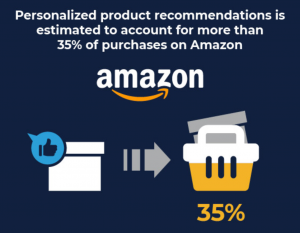— December 19, 2017

Here’s what Harvard recommends…
Recently I attended the Leading High Growth Businesses at Harvard University. The workshop was part of a pilot program designed by Harvard for women leaders of fast-growth companies who wanted to strategically super-charge their corporate plan. 58 companies were represented from all over the world.
After the weeklong workshop, 19 plus pages of notes and three sleepless nights (as I was so inspired from the day’s learning), I’ve distilled six important
takeaways that can be applied to any corporate team.
Link Strategy to Sales
Ever wonder why your strategic planning session sounds and feels the same from one year to the next and those strategic goals are never achieved? The missing link is sales. You need to link every corporate strategic goal to sales. What’s the goal and what’s the role your sales team will have in achieving that goal?
When strategy and sales are linked, and executed on, this action is 20 times more effective than any advertising or social media efforts. This means that from the very beginning, you need to be setting goals for the company that sales is compensated on correctly to achieve. Sales targets can no longer be set in a silo; they need to directly support the goals of the business.
Corporate Goals
Goals and goal setting, both company-wide and personally are standard practice for many motivated people and high growth companies. If one goal is good, many are better, right?
Wrong. Our professor, Frank Cespedes, showed research that proved any more than five goals were counterproductive and went so far as to state that “any more than five goals is a list, not a set of goals. A list that would never get done.”
The lesson here for us high-achievers is to understand and accept that focus trumps breadth, and to have the discipline to know when to stop – when we’re planning for our next achievements.
Multiple Lines of Businesses
Money managers would attest to the importance of having multiple income streams for maximum wealth building. Harvard is recommending businesses apply the same principle. Multiple business models are an effective means of adding value to the overall worth of the company.
This is not a recommendation to lose focus; this is a recommendation to apply more than one business model to your company.
For example, if your revenue comes from large annual projects, where could you add a monthly subscription-based offering as an additional line of business – and additional source of recurring revenue?
Develop Market Value Not Book Value
Buyers are looking for future potential. While book value still matters, set your sights on the potential for your company. We were introduced to Blue Mercury who sold to Macy’s for $ 210M+. Guess what? They sold on the market value of their creation, not on the book value.
The creators of Blue Mercury only achieved the success and the growth in their company when they looked to develop the possibilities of what could be.
What could the company become? This is the question they asked, instead of looking at where they were (book value) and simply adding on a percentage increase they wanted to achieve the next year.
By starting to work on developing market value this led to the sale of their company and a lucrative deal with Macy’s: A transaction that never would have been possible by only looking at where they were.
Critical Failure Factors
Another concept to turn on its head: You are well familiar with key success factors. After reading this article, I’d suggest you banish those from your mind. You already know what you need to do to be successful, listing them only makes you feel good. Let’s talk about the scary things that cannot happen to your business and then do everything we can to ensure they do not come to light.
This is not about thinking negatively, this is about getting crystal clear on what could derail the efforts of your company and then working to be sure those do not happen. While key success factors for companies tend to be similar (make a profit, retain key staff etc.) it is too easy for you to fall into taking on someone else’s key success factor, which sets up a blind spot for yourself in your own company.
Critical failure factors, on the other had will be particular to your group’s situation, market, industry and success. This helps you zero on your corporate goals and truly aligning them to what you need to do (or not do) to succeed.
No More Work/Life Balance
Many are tired of the work/life balance talk. It feels defeating as sometimes work requires us to pour on the effort for an extended period of time.
And when it is time to refuel, often people feel guilty about doing so and end up vocally justifying that they are finally getting their work life balance right. That is no way to start any kind of relaxing holiday.
Linda Applegate at Harvard emphasized work/life integration. Is it a fancy new term? No. The thinking is that we can’t totally shut off from work particularly if we lead the company or team. As well, we can’t totally shut off from our life of family, friends, travel, hobbies when were deep into a work session. We need to see ourselves, and our people as whole.
We bring our whole self to work. We bring our whole self to our personal life. When companies start to acknowledge, respect and make room for the whole person including their personal goals, achievements and challenges, we see a different type of engagement.
Employees feel like the company “gets” and respects them as a whole. This makes them feel cherished, respected and understood. In return we see these employees’ performance and contribution back to the company actually increase. It is as if this understanding has fulfilled a need in the employee and they are returning the favour ten-fold. Beyond what Leading High Growth Businesses at Harvard taught us on this topic, we’re seeing it happen with past My Big Idea clients.
Your Turn
I’d encourage you to pick one or two of these points and make a plan to bring them into your company. Your company’s future success depends on the different thinking you start doing today.
Business & Finance Articles on Business 2 Community
(76)
Report Post






